Export Map
Studio makes it easy to export your maps in a variety of formats. This guide describes how to:
All exported formats are delivered to you as a downloadable file and must be saved to your local disk.
Click the Export button to open the Export Menu.
Export Map
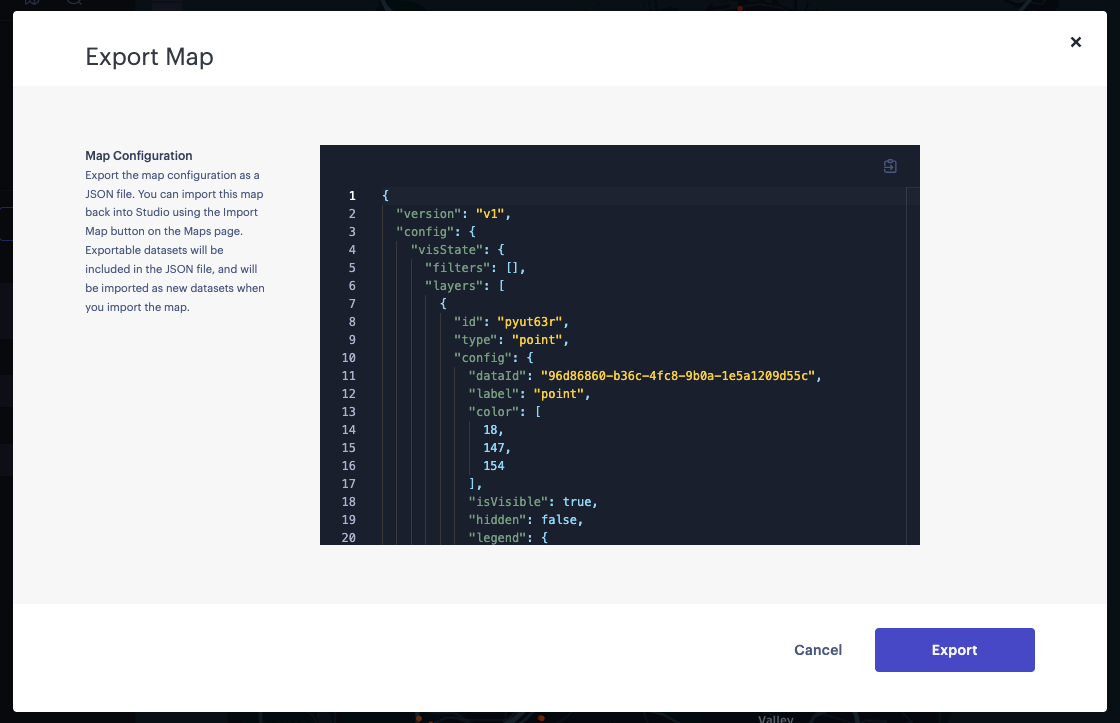
The Export Map window.
You can export the current map as a JSON file. Using this feature, you can either load the map programmatically or import it back into Studio.
The JSON file includes both:
- A dataset object, containing processed data to render your map.
- A configuration object, containing the current layer, filter, map style, and interaction settings.
Follow these steps to export your map:
- In the Export Menu, click Export Map.
- Click Export to generate the JSON file.
Note: Studio's map configuration is connected to datasets. The
dataIdkey is used to bind layers, filters, and tooltip settings to a specific dataset. If you attempt to upload a configuration with a dataset in your own Studio app, ensure that your datasetidmatches thedataIdin the configuration.
Export Image
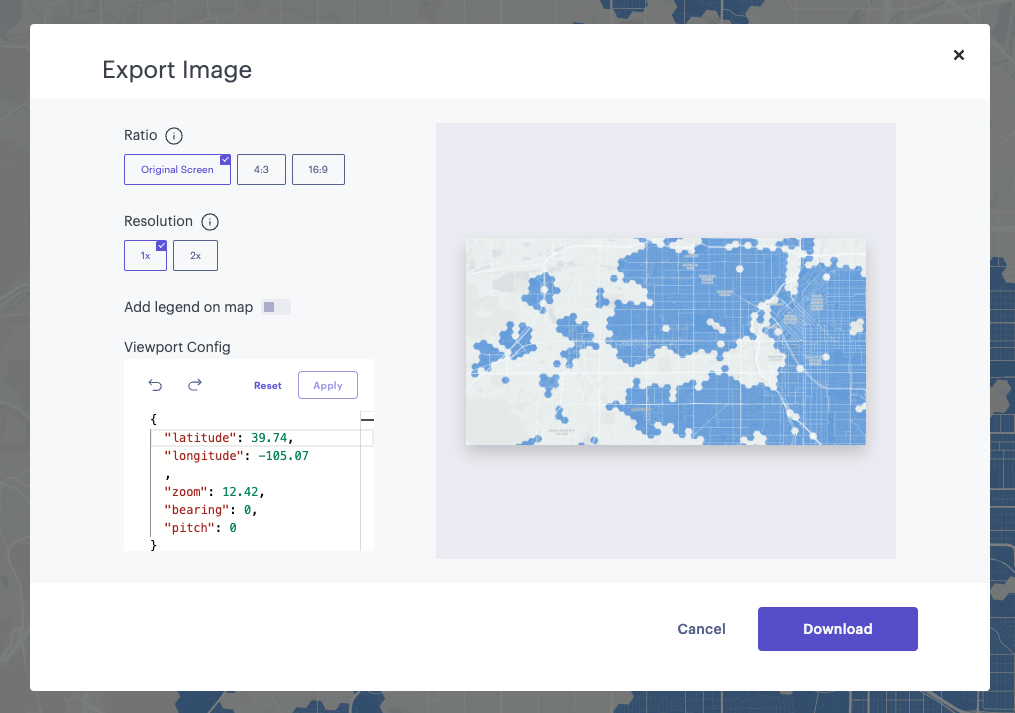
The Export Image window.
You can export your map as an image in PNG format. You can edit the JSON in viewport config and apply it to the exported image which will update to match the new state defined in the JSON. The underlying Studio map state does not change.
Follow these steps to export your map as an image:
- Move your viewport to the area of the map you want to capture.
- In the Export Menu, click Export Image.
- Select the resolution, ratio, then add or exclude a map legend.
- Optionally, edit the JSON in viewport config and apply changes.
- Click Download to complete the export.
Export Video
If your visualization has a time filter or a trip layer animation, you can export your map as a video.
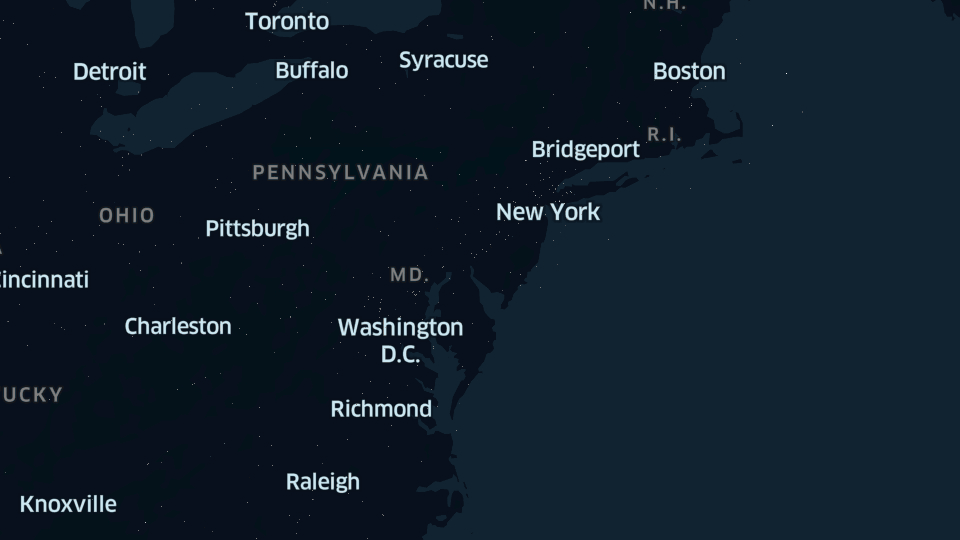
An example of a video exported from Studio.
Click the Export Video button to generate your video. You can find this button in several places, including:
- The Time Filter timeline.
- The Trip Layer timeline.
- The Export Menu.
After clicking the Export Video button, the Export Video window appears.
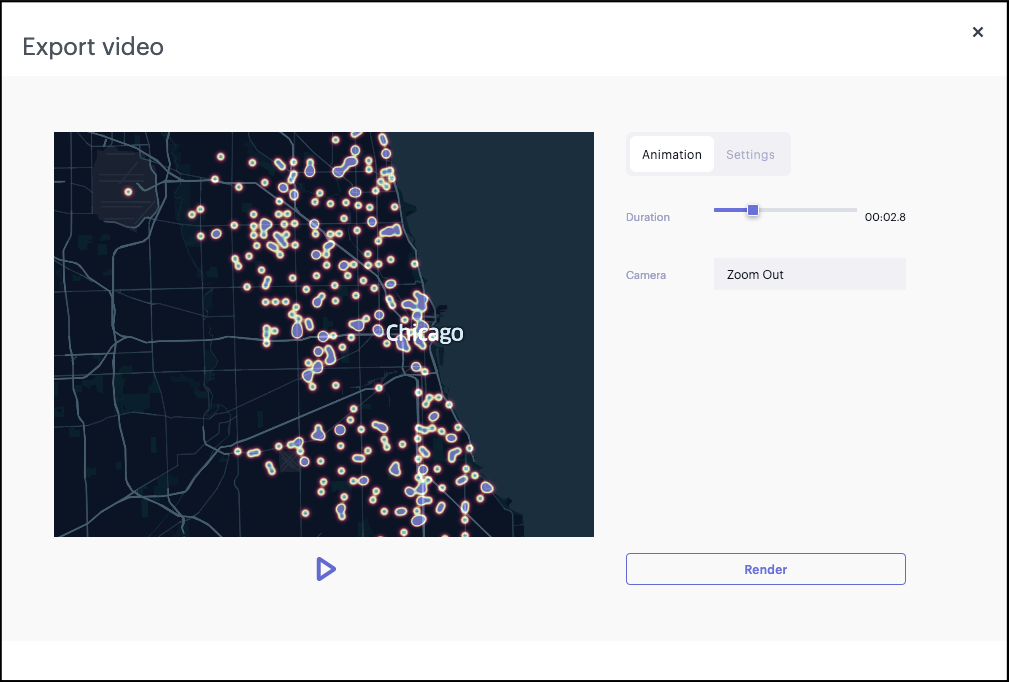
Export Video window.
This window contains two tabs, including:
-
The Animation tab, where you can reposition the map, change the video's duration, and add camera effects.
- Supported camera effects include Orbit (90°, 180°, or 360°) and Zoom (in or out).
-
The Settings tab, where you can name your video, select a format, and configure the video's aspect ratio and quality.
-
Supported formats include GIF, WebM, PNG Sequence, and JPEG Sequence.
-
Supported aspect ratios include 16:9 and 4:3.
-
Supported qualities include:
-
Good (540p), High (720p), and Highest (1080p) for 16:9 aspect ratio.
-
Good (480p), High (960p), and Highest (1440p) for 4:3 aspect ratio.
-
-
Note: Your video's file size will vary depending on the duration, format, and quality selected.
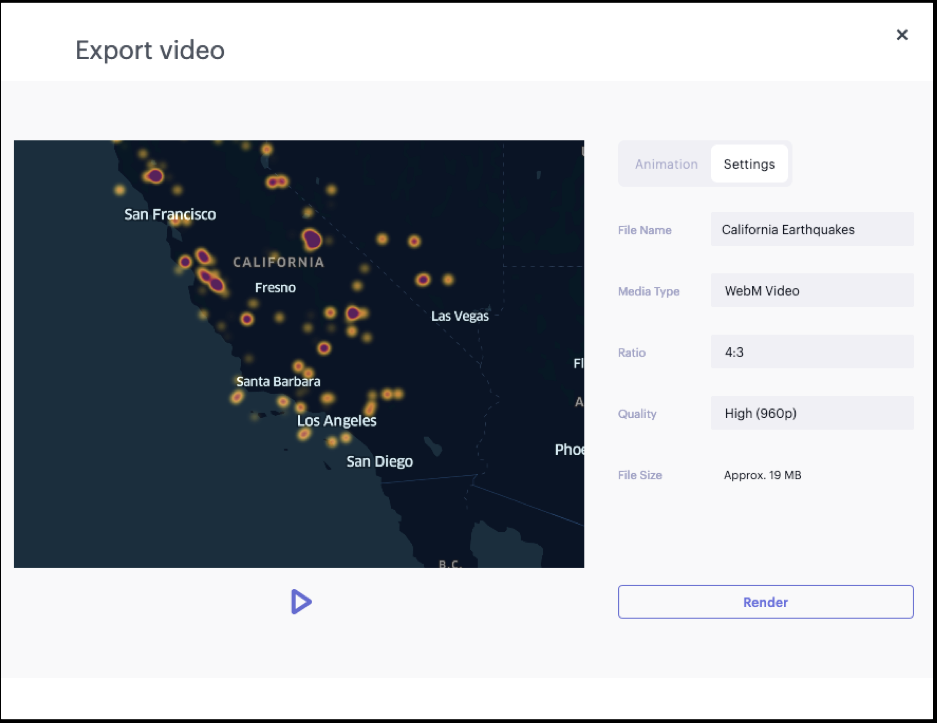
Export Video Settings tab.
Click the play button to see a preview of your map. Click and drag to change the map's frame, and scroll to zoom in and out.
Click Render when you are ready to export.
To recap, follow these steps to export your animated map as a video:
- Click the Export Video button.
- In the Animation tab, select your desired duration and camera effects.
- In the Settings tab, select your desired format, aspect ratio, and quality.
- If needed, adjust your frame in the preview window.
- Click Render to complete the export.
Updated almost 2 years ago
